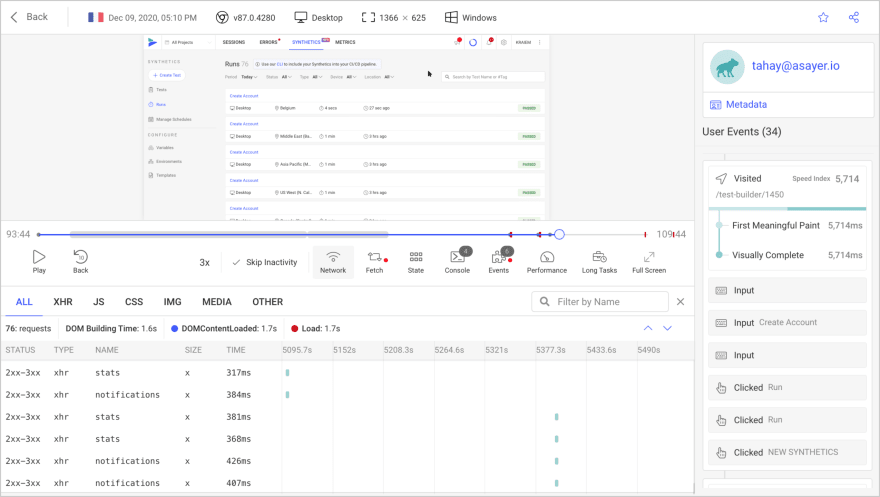27
Is It Time for the JavaScript Temporal API?
by author Craig Buckler
Date handling in JavaScript is ugly. The
Date() object has not changed since the first Java-inspired implementation in 1995. Java scrapped it but Date() remained in JavaScript for backward browser compatibility.Issues with the
Date() API include:Date objects are mutable -- for example:
const today = new Date();
const tomorrow = new Date( today.setDate( today.getDate() + 1 ) );
console.log( tomorrow ); // is tomorrow's date
console.log( today ); // is also tomorrow's date!Browsers must continue to support
Date() but a new Temporal static global date object is at the Stage 3 Candidate Proposal in the TC39 standards approval process (the final stage before implementation). The API addresses all the issues above and it's coming to the Chrome browser soon. It's unlikely to have widespread implementation until late 2022 so be wary that changes could occur.// time since the Unix epoch on 1 Janary, 1970 UTC
Temporal.Now.instant().epochSeconds;
Temporal.Now.instant().epochMilliseconds;
// time in current location
Temporal.Now.zonedDateTimeISO();
// current time zone
Temporal.Now.timeZone();
// current time in another time zone
Temporal.Now.zonedDateTimeISO('Europe/London');
Temporal.Instant.from('2022-03-04T05:56:78.999999999+02:00[Europe/Berlin]');
Temporal.Instant.from('2022-03-04T05:06+07:00');You can also use an epoch value:
Temporal.Instant.fromEpochSeconds(1.0e8);new Temporal.ZonedDateTime(
1234567890000, // epoch nanoseconds
Temporal.TimeZone.from('Europe/London'), // timezone
Temporal.Calendar.from('iso8601') // default calendar
);
Temporal.ZonedDateTime.from('2025-09-05T02:55:00+02:00[Africa/Cairo]');
Temporal.Instant('2022-08-05T20:06:13+05:45').toZonedDateTime('+05:45');
Temporal.ZonedDateTime.from({
timeZone: 'America/New_York'
year: 2025,
month: 2,
day: 28,
hour: 10,
minute: 15,
second: 0,
millisecond: 0,
microsecond: 0,
nanosecond: 0
});Plain dates and times reference simpler calendar events which are not associated with a specific time zone. The options include:
Temporal.PlainTime refers to a specific time, e.g. "the meeting occurs at 3pm every weekday":
// both are 15:00:00
new Temporal.PlainTime(15, 0, 0);
Temporal.PlainTime.from('15:00:00');Temporal.PlainDate refers to a specific date, e.g. "your tax return is due by January 31, 2022":
// both are January 31, 2022
new Temporal.PlainDate(2022, 1, 31);
Temporal.PlainDate.from('2022-01-31');Temporal.PlainDateTime refers to a date and time without a time zone:
// both are 4 May 2022 at 10:11am and 12 seconds
new Temporal.PlainDateTime(2022, 5, 4, 10, 11, 12);
Temporal.PlainDateTime.from('2022-05-04T10:11:12');Temporal.PlainYearMonth refers to a date without a day, e.g. "the June 2022 schedule is ready":
// both are June 2022
new Temporal.PlainYearMonth(2022, 6);
Temporal.PlainYearMonth.from('2022-06');Temporal.PlainMonthDay refers to a date without a year, e.g. "Star Wars day is on May 4":
// both are May 4
new Temporal.PlainMonthDay(5, 4);
Temporal.PlainMonthDay.from('05-04');Debugging a web application in production may be challenging and time-consuming. OpenReplay is an Open-source alternative to FullStory, LogRocket and Hotjar. It allows you to monitor and replay everything your users do and shows how your app behaves for every issue.
It’s like having your browser’s inspector open while looking over your user’s shoulder.
OpenReplay is the only open-source alternative currently available.
It’s like having your browser’s inspector open while looking over your user’s shoulder.
OpenReplay is the only open-source alternative currently available.

Happy debugging, for modern frontend teams - Start monitoring your web app for free.
You can extract specific date and time values from a
Temporal object. Assuming the following date and time:const t1 = Temporal.ZonedDateTime.from('2022-12-07T03:24:30+02:00[Africa/Cairo]');you can extract:
t1.year; // returns 2022
t1.month; // 12
t1.day; // 7
t1.hour; // 3
t1.minute; // 24
t1.second; // 30
t1.millisecond; // 0
t1.microsecond; // 0
t1.nanosecond; // 0Other useful properties include:
dayOfWeek -- returns 1 for Monday to 7 for SundaydayOfYear -- returns 1 to 365 or 366 on leap yearsweekOfYear -- returns 1 to 52 or 53
daysInMonth -- returns 28, 29, 30, or 31
daysInYear -- returns 365 or 366
inLeapYear -- returns true for a leap year or false when notAll
Temporal objects have a .compare(date1, date2) method which returns:0 when date1 and date2 are the same1 when date1 occurs after date2, or-1 when date1 occurs before date2
For example:
const
date1 = Temporal.Now,
date2 = Temporal.PlainDateTime.from('2022-05-04');
Temporal.ZonedDateTime.compare(date1, date2);
// returns 1 when May 4, 2022 arrivesYou can pass the
compare() method as an Array sort() function to arrange dates into ascending chronological order (earliest to latest):const t = [
'2022-01-01T00:00:00+00:00[Europe/London]',
'2022-01-01T00:00:00+00:00[Africa/Cairo]',
'2022-01-01T00:00:00+00:00[America/New_York]'
].map( d => Temporal.ZonedDateTime.from(d) )
.sort( Temporal.ZonedDateTime.compare );You can define a duration as a
Temporal.Duration object which sets a period in years, months, weeks, days, hours, minutes, seconds, milliseconds, microseconds, and nanoseconds as well as a sign for -1 negative or 1 positive durations. However, all these methods accept a duration-like value without the need to create a specific object. Examples:const t1 = Temporal.ZonedDateTime.from('2022-05-04T00:00:00+00:00[Europe/London]');
// add 8 hours 59 minutes
t1.add({ hours: 8, minutes: 59 }); // or
t1.add(Temporal.Duration.from({ hours: 8, minutes: 59 }));
// subtract 2 weeks
t1.subtract({ weeks: 2 }); // or
t1.add({ weeks: 2, sign: -1 });
// round to nearest month
t1.round({ smallestUnit: 'month' });Plain dates and times can wrap so adding 24 hours to a
PlainTime returns a new Temporal object with an identical value.The
until() and since() methods return a Temporal.Duration object describing the time until or since a specific date and time based on the current date/time, e.g.// months to t1
t1.until().months;
// days to t2
t2.until().days;
// weeks since t3
t3.since().weeks;The
equals() method also determines whether two date/time values are identical:const
d1 = Temporal.PlainDate.from('2022-01-31');
d2 = Temporal.PlainDate.from('2023-01-31');
d1.equals(d2); // falseAll
Temporal objects have a string representation returned when using the .toString() method, e.g. Temporal.Now.toString():2022-09-05T02:55:00+02:00[Europe/London]This is not user friendly but the Internationalization API offers a better alternative with localisation options. For example:
// define a date
const d = new Temporal.PlainDate(2022, 3, 14);
// US date format: 3/14/2022
new Intl.DateTimeFormat('en-US').format(d);
// UK date format: 14/03/2022
new Intl.DateTimeFormat('en-GB').format(d);
// Spanish long date format: miércoles, 14 de abril de 2022
new Intl.DateTimeFormat('es-ES', { dateStyle: 'full' }).format(d);This is not part of the
Temporal API and there's no guarantee the Intl (Internationalization) API will support Temporal as well as Date objects -- although there would be a developer outcry if it didn't!We've accepted the dodgy
Date() since day one but Temporal gives JavaScript developers something to look forward to. The days of resorting to a date library are nearly over.For further information, refer to:
27
